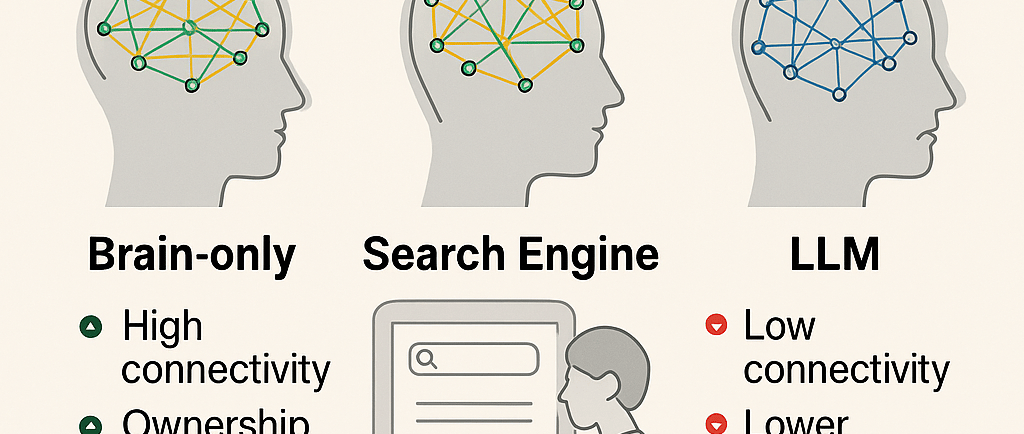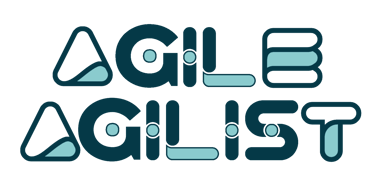Your Brain on AI
A groundbreaking study by MIT researchers (Kosmyna et al., 2025) used EEG—and a digital obstacle course—to uncover the hidden cost of relying on LLMs versus traditional search or writing without tools.
Mark Saymen
6/18/20251 min read


Your Brain on AI: What EEG Reveals About Cognitive Debt
A groundbreaking study by MIT researchers (Kosmyna et al., 2025) used EEG—and a digital obstacle course—to uncover the hidden cost of relying on LLMs versus traditional search or writing without tools.
⚙️ The Experimental Setup
Participants (n = 54) were split into:
Brain‑only: wrote essays with no assistance.
Search engine: used Google.
LLM: used ChatGPT or similar.
After three sessions, groups swapped tools to observe learning and rebound effects in a fourth session
🔍 Key Findings from the Study
Neural Connectivity Declines with AI Use
Brain‑only writers showed the strongest, most widespread EEG connectivity across alpha, beta, and delta bands.
Search engine users displayed moderate connectivity.
LLM-assisted writers had the weakest brain connectivity, indicating lower cognitive engagement
Switched Tool, Switched Brain
Participants moving from Brain‑only to LLM (Brain→LLM) showed increased visual and executive functions, similar to search engine users.
LLM-to-Brain participants, however, failed to regain strong connectivity, showing ongoing cognitive dampening
Lower Ownership & Recall
LLM users reported lowest sense of authorship, struggled to quote their own content.
Brain-only users showed full ownership and scored highest in essay coherence and originality .
Cognitive Debt Accumulates
Over 4 months, LLM users underperformed in writing quality, neural effort, and memory compared to other groups.
The study introduces “cognitive debt”—the gap between convenience and sustained mental engagement
💡 Why It Matters
Tools reduce brain discipline: Like calculators teaching fewer math basics, LLMs reduce deep cognitive exploration.
Effort fuels learning: True skill—writing, creating, reasoning—is nurtured through active struggle.
Mindful adoption is vital: There’s value in AI—but only when paired with deep cognitive work, learning mechanisms, and periodic unplugging.
🔧 Practical Takeaways
Limit AI use for drafting only—do heavy editing, recall work manually.
Alternate brain states—rotate between “tool-on” and “tool-off” sessions.
Track cognitive engagement—use shared reflection, memory tests, or short EEG-like metrics where possible.
✅ Final Word
AI is a powerful assistant—but not a replacement for human thought. MIT’s study warns: unbridled AI reliance erodes mental investment and depth. Enter the era of “Cognitive-First AI”—using tools to amplify but not replace human brilliance.
